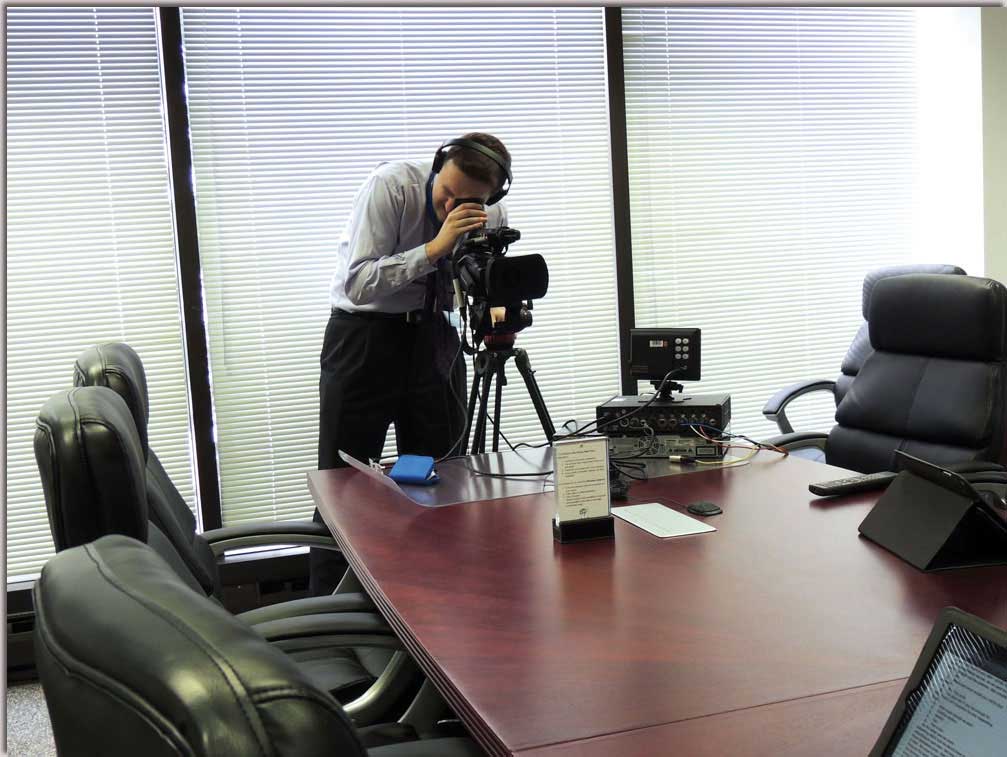The Role of Legal Videography in Depositions and Tests
Lawful videography has actually emerged as a necessary device in both depositions and trials, offering a diverse method to documenting witness statements. By recording not just the talked word but also the subtleties of non-verbal communication, this tool boosts the reputation of statements and protects essential proof for future process. As attorneys increasingly recognize its value, it prompts a deeper evaluation of exactly how these visual records can influence juror understandings and test end results. What effects might these developments hold for the future of legal practice?
Importance of Legal Videography
Lawful videography plays a critical function in the paperwork and discussion of depositions and trials. This customized area combines technical skills with legal understanding to develop a reputable document of proceedings that can dramatically affect case end results. The aesthetic element of legal videography boosts the understanding of witness statement, allowing jurors and courts to observe not only the talked words but additionally the attitude, feelings, and body movement of the witnesses.

The significance of legal videography expands past the court; it also plays an essential duty in protecting evidence for future referral, whether for charms or additional legal action. Its assimilation into the lawful process is essential for guaranteeing a fair and exact representation of the realities, eventually adding to the search of justice.

Refine of Legal Videography
While recording the nuances of depositions and trials, the process of lawful videography involves a number of essential steps that guarantee high-grade, accurate recordings. Initially, an expert lawful videographer prepares by assessing the case materials and understanding the certain needs of the deposition or test. This prep work includes familiarizing themselves with the participants and the context, which aids in capturing relevant details.
On the day of the recording, the videographer sets up the required devices, which usually includes high-definition video cameras, microphones, and appropriate illumination. Making sure ideal angles and sound high quality is critical, as it straight influences the performance of the recording. The videographer connects with lawyers and individuals to establish procedures, guaranteeing that everybody comprehends the recording process.
During the deposition or trial, the videographer diligently videotapes the process, paying close focus to both spoken and non-verbal hints. legal videography. This includes capturing the behavior and reactions of witnesses and attorneys. After the session ends, the videographer may edit the video for clearness and compliance with lawful criteria, creating a final item that precisely shows the proceedings for future referral and usage in legal contexts
Advantages in Depositions
The consolidation of videography in depositions offers countless benefits that enhance the total process of collecting proof. One primary advantage is the capability to capture witness testaments with visual and acoustic fidelity, providing an extra precise depiction of the witness's attitude, tone, and body language. This multidimensional strategy enables lawyers and juries to examine integrity much more properly than conventional written records alone.
Additionally, videographed depositions work as a powerful tool for maintaining testimony. Needs to a witness become inaccessible for trial, their taped deposition can be played in court, making certain that their evidence continues to be available and appropriate. This aspect considerably lowers the risk of losing critical information that might influence case results.
Furthermore, the usage of lawful videography advertises better preparation for lawyers. Assessing video footage enables lawful groups to assess and refine their techniques, determining toughness and weak points in their cases. This preparatory advantage can result in even more look at these guys engaging discussions in court.
Lastly, videography improves the general professionalism of the deposition process, instilling confidence in clients relating to the thoroughness of their legal representation. By leveraging innovation, lawyers can substantially boost the performance of depositions.
Influence On Tests
In several tests, the assimilation of videography can dramatically affect the discussion of proof and the court's understanding. Lawful videography catches witness statements and important proof in a dynamic style, allowing jurors to engage with the product on numerous degrees. This visual component enhances the narration facet of a test, supplying context and emotional resonance that traditional text-based proof might lack.
Moreover, video clip recordings can function as effective tools for impeachment during cross-examination. When discrepancies emerge in between a witness's prior statements and their court room testament, video clip evidence offers an objective referral that can guide jurors' viewpoints. This immediacy and clarity can bolster the credibility of an event's story while concurrently weakening opposing arguments.
In addition, making use of videography can help simplify complicated info, making it a lot more available to jurors who might struggle to grasp complex details offered exclusively with spoken statement. By combining visuals with acoustic information, legal videography can enhance retention and understanding, inevitably influencing the court's decision-making process. Consequently, the effect of videography in trials expands beyond plain aesthetic appeals; it plays an essential duty fit the lawful landscape and outcomes.
Future Trends in Legal Videography
As we look towards the future of lawful videography, several emerging fads promise to reshape its duty within the court room. One considerable pattern is the assimilation of synthetic knowledge (AI) in video clip evaluation and editing - legal videography. AI can enhance the procedure of identifying essential moments in taped depositions, permitting lawyers to swiftly access relevant content, consequently boosting performance in case preparation
Furthermore, the increase of digital truth (VIRTUAL REALITY) and augmented reality (AR) technologies is expected to transform exactly how jurors experience proof. By immersing jurors in a simulated atmosphere, these innovations can supply an extra extensive understanding of intricate situations, resulting in even more informed considerations.

Moreover, the enhancing need for remote depositions, increased by the COVID-19 pandemic, will likely proceed. Lawful videographers will need to adjust to brand-new software program and systems to ensure top notch recordings in online setups.
Last but not least, the growing emphasis on data safety will demand more stringent procedures for storing and sharing video clip proof. As the legal landscape evolves, lawful videographers need to stay abreast of these fads to preserve their relevance and effectiveness in the judicial procedure.

Final Thought
In recap, legal videography offers an essential feature in the judicial procedure, enhancing the integrity of depositions and trials. By catching the blog here nuances of witness testimonies, this tool not just protects vital evidence however also aids in providing details efficiently to jurors. The value of visual paperwork in examining reputation and assisting in cross-examination can not be overstated. As modern technology remains to develop, legal videography the original source is positioned to further transform its function within the lawful landscape.